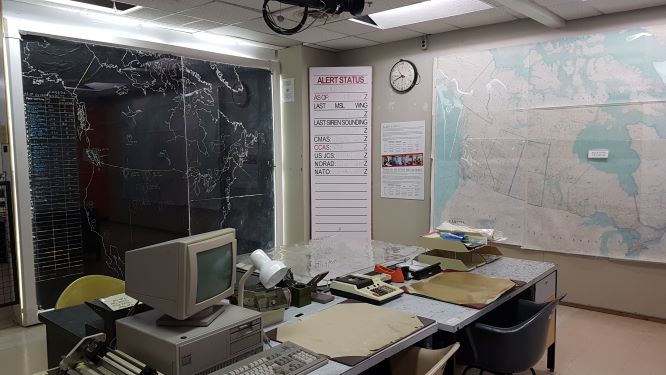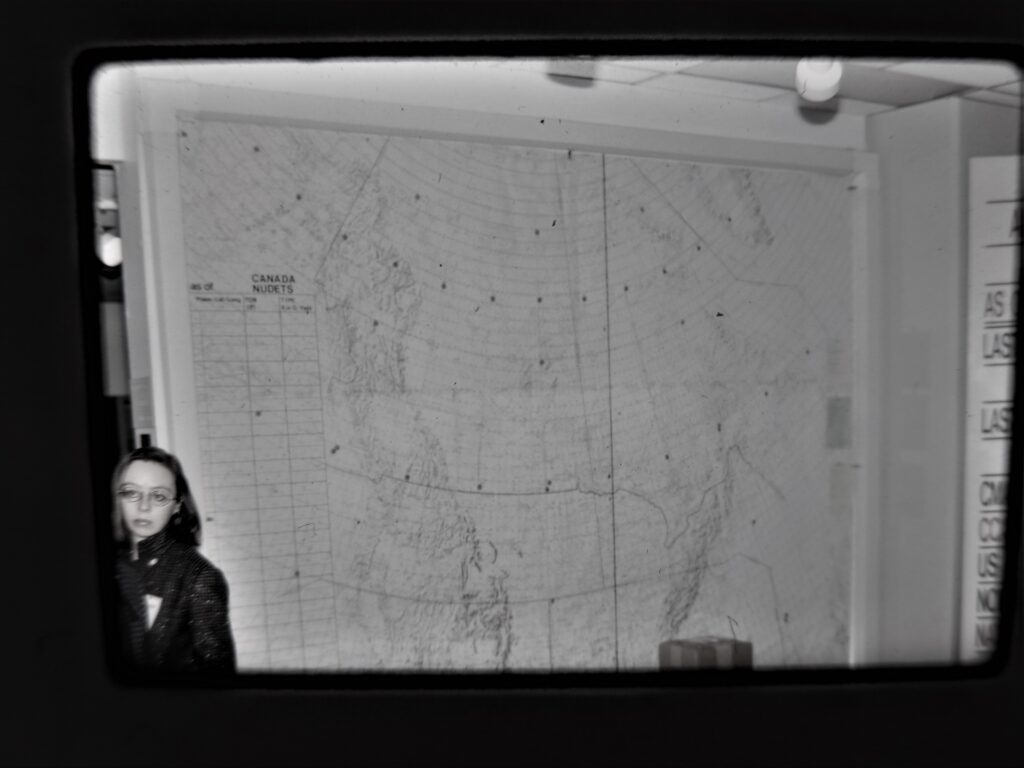THE EVOLUTION OF THE CIVIL SITUATION MONITORING AND BRIEFING CAPABILITY AT THE CENTRAL EMERGENCY GOVERNMENT HEADQUARTERS, CANADIAN FORCES STATIONS CARP (THE DIEFENBUNKER) FROM 1961 TO 1992
References:
A. Joint Standing Orders and Operational Procedures for Central Government Facility EPC 16/81 (published under the authority of the DNDs Dir Gen Mil Plans and Ops and EPC=s Dir Gen Ops in 1981)
B. Standing Operational Procedures – National Operational Information Centr (Appears to be an incomplete or draft -SECRET at the time-document – dated 25 March 1964 over the signature block of P.A. Faguy , A/Dir EMO)
C. Rustic Plan (EPC 1/82) 1982 (formerly CONFIDENTIAL released over the signature of Armand F. Wigglesworth (DEOC at the time), signature block of D.H Hall (DG Ops at that time)
D. Notes and a partial draft of instructions for Exercise WINTEX 13 (undated) accompanied by extracts (Chapter 3 – Manning and Operation of Emergency Headquarters) of DNDP 13 SECRET annotated with possible revisions in support of that exercise.
E. Briefing Notes – Central Emergency Government Headquarters – Wartime Operations (formerly SECRET) – file: 1216-2, circa Nov 1969 – source unknown
Introduction and Background
- The primary purpose for the construction of the Central Emergency Government Headquarters (CEGHQ) at Carp and related facilities in other locations in the environs of Ottawa was to ensure physically protected locations from which the federal government could provide a thin thread of continuity of legally empowered government in the event of a nuclear attack on North America. Specifically its functions were to: A1) house a central government which will formulate policy and direct operations essential to survival during an emergency period; 2) deal with international and world affairs; and, 3) provide a Joint Operations Centre… to keep the civil elements of government informed@, Thus the interior design of the main building at Carp that the War Cabinet, the Governor-in-Council and the skeleton department staff that were to have supported them, required some a physical location to monitor the civil situation in Canada. This civil centre would have in-effect, paralleled the military=s monitoring of the of the war situation (in the Military Operations Information Centre – the MIC). However its primary focus would have been on the internal-to-Canada effects of an attack on the populace and the nation=s physical and economic infrastructure.
- According to reference B, as of the time of its writing in March 1964 the OperationalInformation Centre was a component of the Cabinet Office. And its Chief would have reported to the Secretary of the Cabinet through the Operations Coordination Staff of the Cabinet Secretariate. It was the Emergency Measures Organization was responsible for planning the OPINFO and for ensuring that it was maintained in an appropriately ready operational posture. EMO was to maintain the manning roster, wherever possible filled by EMO staff, supplemented as needed by public servants from other government departments. The military component of the combined centre were to be supplied by the Department of National Defence. The OPINFO centre would have functioned in two shifts composed of the following:
Shift One Shift Two
Chief Assistant Chief
Duty Officer Duty Officer
Army Liaison Officer Army Liaison Officer
Regional Reports Officer Regional Reports Officer
Regional Reports Officer Regional Reports Officer
Transcriber Transcriber
Messenger Messenger
3. Each shift was made up of two functional groups: a Display Group and a Reports Group. The Centre was housed in two rooms. The larger (currently room number 331A) was the display room and the smaller (room 321A) was for the staff work necessary for the maintenance if the information system.


4. The variety of sources of information for the National OPINFO were the following: Federal Warning Centre (FWC). This was the outlet at the federal level of the Natinal Survival Attack Warning System (NSAWS) and the Nuclear Detonation Fallout Reporting System (NDFRS). It would have provided attack warning and information on the operational situation during an actual attack on Canada.
* Regional Emergency Government Headquarters (REGHQ). Each REGHQ was to report the effects of an enemy attack on its region, and progress in re-establishment and/or maintenance of emergency civil government throughout its region.
* Other federal government departments in the central emergency government complex. * Message Control Centre – MCC (room 405B). A part of the Cabinet Office that was to provide OPINFO with copies of all messages going out of or comimg into the CEGHQ. It was a civilian element to process all incoming and outgoing civilian message traffic to ensure correct distribution. It was located adjacent to the Military Signal Message Centre (room 406)
The FWC had a communications centre connected to the NSAWS teletype network. This network functioned completely separately from the the Canadian Army Signal System (CASS). Messages passed over the NSAWS network went directly to the FWC and were forwarded to the OPINFO for information. They did not go through the MCC. Nearly all such messages would have been of high precedence, being concerned with reporting warnings of an attack, surveillance, actual attack, predicted and observed fallout, damage and casualties. They would have been of great importance to both the FWC/ MIC and the OPINFO Centre.
The incomplete draft document at reference C describes the breakdown of the staffs of the various components of the CEGHQ including civil, NSAWS(military), CF Signal System(military) and Site Administration(military and AD Ross the contracted facility systems manager). While somewhat peripheral to this discussion, the breakdown of the Civilian Component and the number of persons involved in each sob-component is interesting:
The Executive………………………………………………………….12
(Governor General, Prime Minister, Cabinet Ministers)
The Privy Council Office…………………………………………..16
(Secty to the Cabinet, Secretariate, Clerks)
Federal Departments and Agencies……………………………205
(Agriculture, Bank, CBC. External Affairs, Finance,
Fisheries, Justice, Labour, Manpower & Immigration,
Defence, Communication, Solicitor General, Health
& Welfare, Post Office, Public Works, RCMP,
Transport, Treasury Board, War Supplies Agency/DSS,
CMHC)
Operations Coordination………………………………………5
The Operational Information Centre……………………..18
Damage Assessment……………………………………………4
Emergency Public Information Service………………….10
Emergency Broadcasting System………………………….9
Message Control Centre……………………………………..8
Site Administration…………………………………………….3
TOTAL……..279
This total relates to the totals for the remainder of the headquarters as follows:
NSAWS (military)……………………………………………16
(plus Military Staff attached to OPINFO)………………8
CF Signal System (military)……………………………..125
Site Administration (military)…………………………….58
(Plus AD Ross/civilian)…………………………………….14
TOTAL………221.
